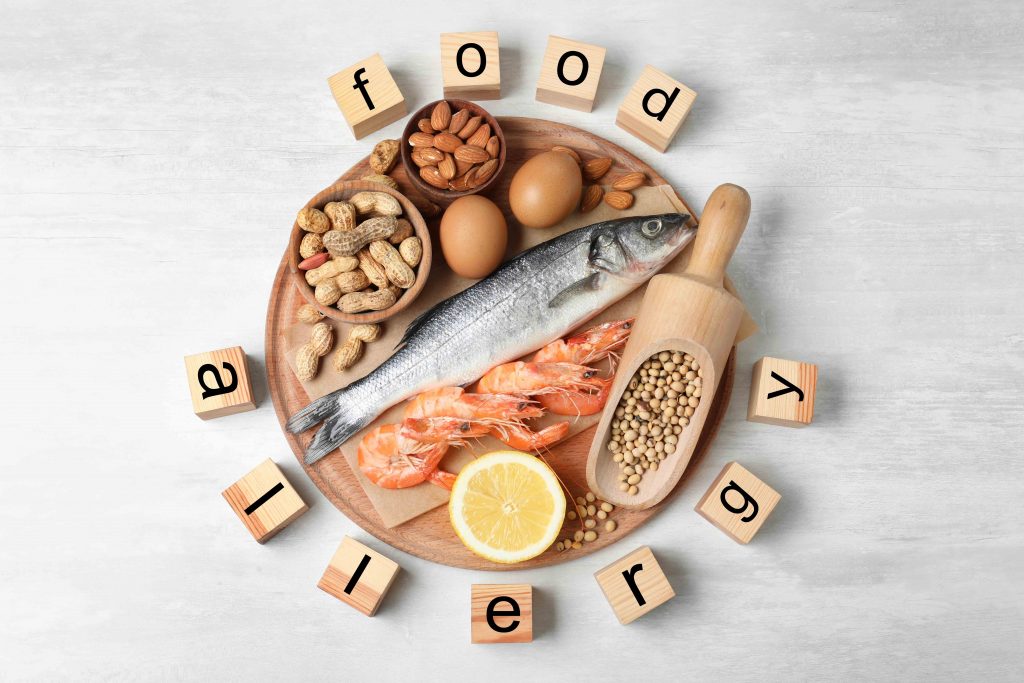Special NutritionServices

Special Nutrition Services for Vegetarians and Vegans
Diets that exclude or focus on certain food groups only are very popular lately in Western societies. The reasons for this shift, from an inclusive diet with all food types to a more specialized diet, are varied.The main reasons are medical, religious, cultural and socio-ethical.

The reasons for this shift, from an inclusive diet with all food types to a more specialized diet, are varied.The main reasons are medical, religious, cultural and socio-ethical.
Statistically, these special diets are more often preferred by people over 40, at the higher or highest educational level, women, and singles. People who choose such diets believe that they contribute in overall health improvement and wellbeing.
Vegetarians & Vegans
Vegetarianism is a broad term that encompasses a diverse and heterogeneous range of dietary practices. The two main terms, though, are vegan diet, which does not include any meat or seafood nor products thereof, and vegetarian diet, which excludes meat, poultry and seafood, but allows dairy products, eggs and honey. Vegetarians (i.e. people who do not eat meat) and vegans (i.e. people who do not consume any animal product), represent a significant proportion of the world’s population.
Vegetarian and vegan diets are among the most famous ones, while equally famous are diets for people who have intolerances or allergies in certain foods or food substances.
One of the main reasons people choose to adopt a vegetarian or vegan diet is that it is “more ethical” while it is also chosen by people who are concerned with social/environmental issues related to intensive livestock farming and its impact on the environment. Furthermore, it may be chosen to promote health because of its multiple benefits to the body. It has been demonstrated that both diets protect from certain forms of cancer, have a positive impact on cardiometabolic parameters (e.g. body mass, plasma cholesterol) and lower ischemic heart disease-related mortality.
Nevertheless, if not monitored by a specialist, strict adherence to a vegetarian and especially a vegan diet carries risks, due to the nutritional deficiencies both in healthy individuals but also in people with underlying diseases. In fact, people who take medicines should be monitored by their physician to adjust their treatment, as this type of diet can influence the efficacy and safety of medical interventions.
Correct planning of a vegan or vegetarian diet by a nutritionists ensures that energy needs are met and micronutrient intake is sufficient. In addition, studied combinations of foods ensure optimal absorption of nutrients and thus proper body functioning.
An experienced nutritionist can also provide protection against the adoption of arbitrary and unscientific nutrition tips that are flooding the Internet, can train a person for the needs that must be met and can ultimately develop a personalized nutrition plan, taking into account the medical history and any individual preferences, while ensuring a tasteful and varied diet.


Food Allergies
In recent years there has been a significant increase in food allergies, i.e. a reaction of the immune system immediately after eating a particular food to which individuals are sensitive (IgE mediated reaction). This is a global health problem that affects millions of people and many aspects of their lives.
Despite being more prevalent during childhood, food allergies can occur anytime. In theory, any food can cause food allergy. However, only a few of them are responsible for the majority of allergies. The most common are milk, egg, nuts and seafood. Over time, milk and egg allergy tends to disappear in children by school age, which is not the case for nuts and seafood.
Symptoms after consuming such foods can be respiratory, cutaneous, gastrointestinal or a combination thereof. Respiratory and circulatory symptoms are more dangerous, because they can lead to cardiopulmonary arrest (allergic shock).
Avoiding allergens is the cornerstone in food allergy management. People suffering from food allergies should be trained to understand food labels and hidden allergens in foods and they should also learn which foods can replace allergens to ensure sufficient intake and avoid dangerous behaviors that can lead to unexpected reactions.
Food allergy management is determined by many factors, including age, personal tolerance levels, concomitant allergies, as well as social factors.
For such a plan to be efficient and safe, a specialized nutritionist should be consulted, who understands fully the standard principles for food allergy management and is constantly informed about the rapidly evolving relationship among nutrition, the gut microbiota and the immune system to adjust accordingly the nutrition plan.
In recent years there has been a significant increase in food allergies, i.e. a reaction of the immune system immediately after eating a particular food to which individuals are sensitive (IgE mediated reaction). This is a global health problem that affects millions of people and many aspects of their lives.
Despite being more prevalent during childhood, food allergies can occur anytime. In theory, any food can cause food allergy. However, only a few of them are responsible for the majority of allergies. The most common are milk, egg, nuts and seafood. Over time, milk and egg allergy tends to disappear in children by school age, which is not the case for nuts and seafood.
Symptoms after consuming such foods can be respiratory, cutaneous, gastrointestinal or a combination thereof. Respiratory and circulatory symptoms are more dangerous, because they can lead to cardiopulmonary arrest (allergic shock).
Avoiding allergens is the cornerstone in food allergy management. People suffering from food allergies should be trained to understand food labels and hidden allergens in foods and they should also learn which foods can replace allergens to ensure sufficient intake and avoid dangerous behaviors that can lead to unexpected reactions.
Food allergy management is determined by many factors, including age, personal tolerance levels, concomitant allergies, as well as social factors.
For such a plan to be efficient and safe, a specialized nutritionist should be consulted, who understands fully the standard principles for food allergy management and is constantly informed about the rapidly evolving relationship among nutrition, the gut microbiota and the immune system to adjust accordingly the nutrition plan.


Avoiding allergens is the cornerstone in food allergy management. People suffering from food allergies should be trained to understand food labels and hidden allergens in foods and they should also learn which foods can replace allergens to ensure sufficient intake and avoid dangerous behaviors that can lead to unexpected reactions.
Food allergy management is determined by many factors, including age, personal tolerance levels, concomitant allergies, as well as social factors.
For such a plan to be efficient and safe, a specialized nutritionist should be consulted, who understands fully the standard principles for food allergy management and is constantly informed about the rapidly evolving relationship among nutrition, the gut microbiota and the immune system to adjust accordingly the nutrition plan.
Food allergy affects 1-2% of adults and less than 10% of children, while food intolerance is estimated to affect up to 20% of the population. Despite being so prevalent on a global scale, the diagnosis of the latter is not always easy.
The only way to manage intolerance is to exclude the food that causes it from the diet, only to gradually reintroduce it to determine the quantity that can be consumed without causing symptoms, taking into account the ingredients of processed foods and ready-made food products.
Nevertheless, excluding a certain food or a food group (e.g. dairy products) from a child’s diet can affect growth and development. Negative effects may be also evident in adults, such as postmenopausal women at risk for osteoporosis.
Nutritionist can create an elimination diet plan with gradual reintroduction of foods to investigate intolerance to food chemical substances and identify those substances that cause problems. At the same time, they can also suggest replacement foods and adjust diet accordingly to ensure balanced and adequate supply of nutrients to the body.
We, Myflex team and Dimitris Oikonomakis, endorse personal preferences and support – respectfully and responsibly – people whose only choice is a special diet.
Food Intolerances
There are clear distinctions between food allergy and food intolerance. Unlike allergy, food intolerance is a non-immunological response initiated by a food or food component at a dose normally tolerated. That is, intolerance (e.g. to lactose) is a form of non-allergic food hypersensitivity and it is never life-threatening. It causes symptoms that appear gradually, often a few hours after eating a substantial amount of the food (unlike an allergy, where just traces can trigger a reaction). Moreover, food intolerance can be caused by many different foods.
One of the most common intolerances is lactose intolerance (lactose is a natural sugar found in dairy products), but also to wheat, gluten, caffeine, artificial sweeteners and histamine.
Therefore, the management of food allergies and intolerances is different.
Food allergy affects 1-2% of adults and less than 10% of children, while food intolerance is estimated to affect up to 20% of the population. Despite being so prevalent on a global scale, the diagnosis of the latter is not always easy.
The only way to manage intolerance is to exclude the food that causes it from the diet, only to gradually reintroduce it to determine the quantity that can be consumed without causing symptoms, taking into account the ingredients of processed foods and ready-made food products.
Nevertheless, excluding a certain food or a food group (e.g. dairy products) from a child’s diet can affect growth and development. Negative effects may be also evident in adults, such as postmenopausal women at risk for osteoporosis.
Nutritionist can create an elimination diet plan with gradual reintroduction of foods to investigate intolerance to food chemical substances and identify those substances that cause problems. At the same time, they can also suggest replacement foods and adjust diet accordingly to ensure balanced and adequate supply of nutrients to the body.
We, Myflex team and Dimitris Oikonomakis, endorse personal preferences and support – respectfully and responsibly – people whose only choice is a special diet.


Nevertheless, excluding a certain food or a food group (e.g. dairy products) from a child’s diet can affect growth and development. Negative effects may be also evident in adults, such as postmenopausal women at risk for osteoporosis.
Nutritionist can create an elimination diet plan with gradual reintroduction of foods to investigate intolerance to food chemical substances and identify those substances that cause problems. At the same time, they can also suggest replacement foods and adjust diet accordingly to ensure balanced and adequate supply of nutrients to the body.
We, Myflex team and Dimitris Oikonomakis, endorse personal preferences and support – respectfully and responsibly – people whose only choice is a special diet.
The special MyFlex meal plans are colorful as they incorporate various food groups that your body can welcome.
- Study the menu of the restaurant you are about to visit in advance and find the perfect dish for you.
- Before settling down at a table, inquire as to the establishment’s ability to accommodate people with your dietary preferences.
- Let the server know about your special diet and ask them if there is a dish that you can have.
Soups, salads and sandwiches are a couple of easy meals that can fit to any diet with a few modifications. On the healthy recipes MyFlex you will find excellent suggestions for any kind of diet you may follow.
Yes, there are. Legumes, tofu, plant-based milk, broccoli, almonds, sesame seeds, figs and oranges are a few examples of calcium-rich vegan foods.
Of course! Lentils, beans, spinach, chard, quinoa, oatmeal, cashews, raisins and dried figs are several examples of vegan sources of iron.